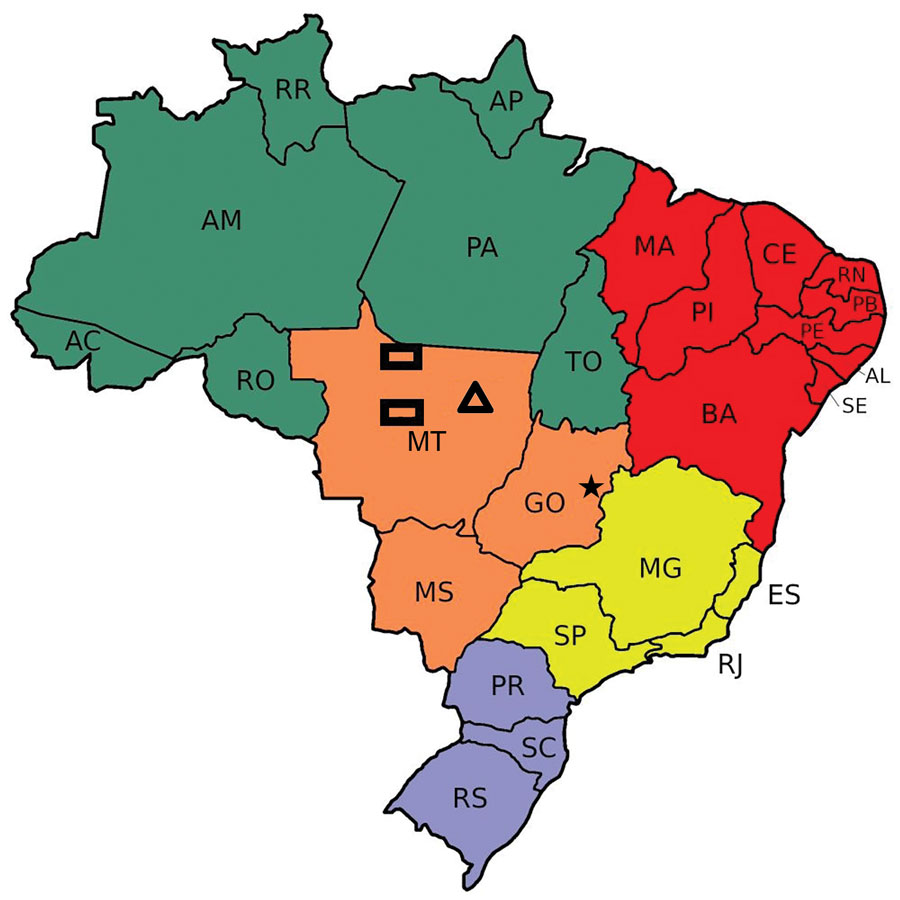Volume 26, Number 5—May 2020
Research
Epidemiologic and Clinical Progression of Lobomycosis among Kaiabi Indians, Brazil, 1965–2019
Figure 1

Figure 1. Areas in which the Kaiabi people live in the state of Mato Grosso, central Brazil. Rectangles represent areas near the Arinos and Teles Pires rivers where the Kaiabi originally lived. Triangle represents the Xingu Indigenous Park where many Kaiabi case-patients currently live. Star indicates Brasilia, the capital of Brazil. Green indicates North Region; red indicates Northeast Region; orange indicates West-Central Region; yellow indicates Southeast Region; and purple indicates South Region. AC, Acre; AL, Alagoas; AM, Amazonas; AP, Amapá; BA, Bahia; CE, Ceará; ES, Espírito Santo; GO, Goiás; MA, Maranhão; MG, Minas Gerais; MS, Mato Grosso do Sul; MT, Mato Grosso; PA, Pará; PB, Paraíba; PE, Pernambuco; PI, Piauí; PR, Paraná; RJ, Rio de Janeiro; RN, Rio Grande do Norte; RO, Rondônia; RR, Roraima; RS, Rio Grande do Sui; SC, Santa Catarina; SE, Sergipe; SP, São Paulo; TO, Tocantins.